As far as I can tell, our little refuge is pretty much Bumblebee Heaven. As unkempt and as crowded as it looks to your average cattleman, it is exactly what Bumblebees seem to want and need. There’s a mix of open grassy fields with native clump grasses like Little Bluestem and Yellow Indiangrass, and some shady wooded areas too. The grassy areas contain an ever-changing mix of native wildflowers, starting in the winter with teeny ephemerals like Tiny Bluets, then on to things like Wild Plums, Blackberries Paintbrush, Baptisia, Barbara’s Buttons, Coneflowers, Sunflowers, Gaillardias, Liatris, Goldenrod, and more.

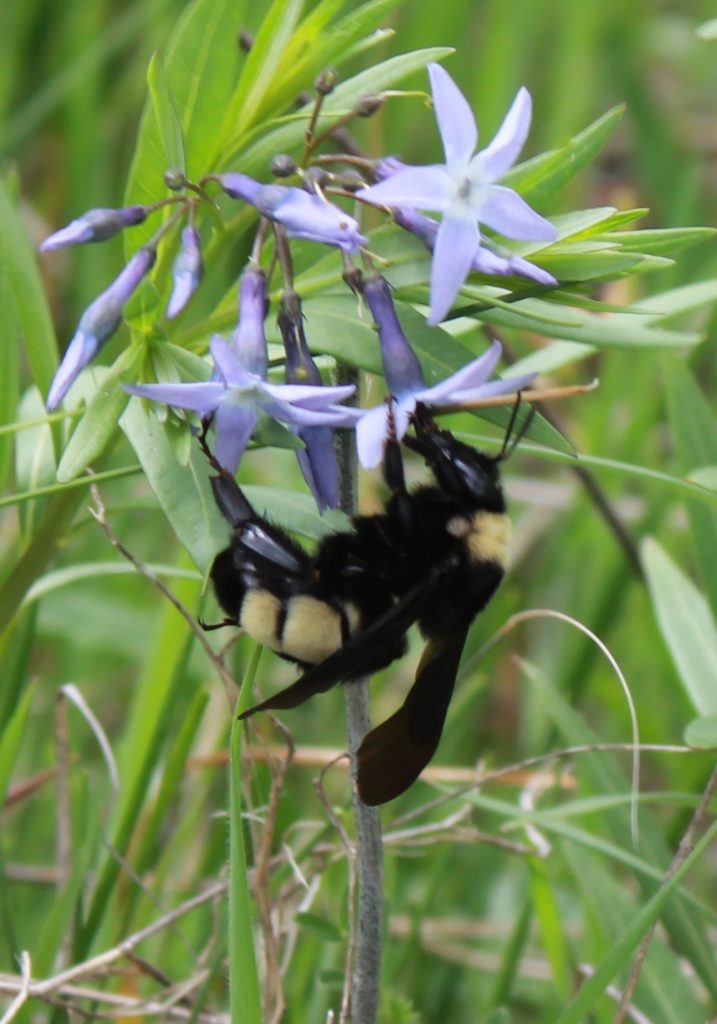
We’re blessed with four species of Bumblebees (so far) up at the refuge, and three of them have been relatively easy to document photographically. I never seem to have a camera or the right lens when I see the fourth, so let’s just pretend for today that I haven’t seen that one. When I finally score a photo, that can be a whole new blog entry!

When the Blackberry/Dewberry (assorted Rubus species) plants begin to bloom, I can count on seeing the plump queens out foraging. They’re huge! This year, they seem even larger than usual.
Bumblebees aren’t like Honeybees much at all. Only the queens, who mated in the fall, survive the winter, alone in a burrow that is provisioned just for them. All the rest of their colony dies off in the fall. In the spring, when the weather warms up, the race to create a new colony is on! The queens emerge and begin to forage on anything they can find. Sometimes the tiniest and most un-showy flowers are providing them nectar, not always the big colorful blooms.
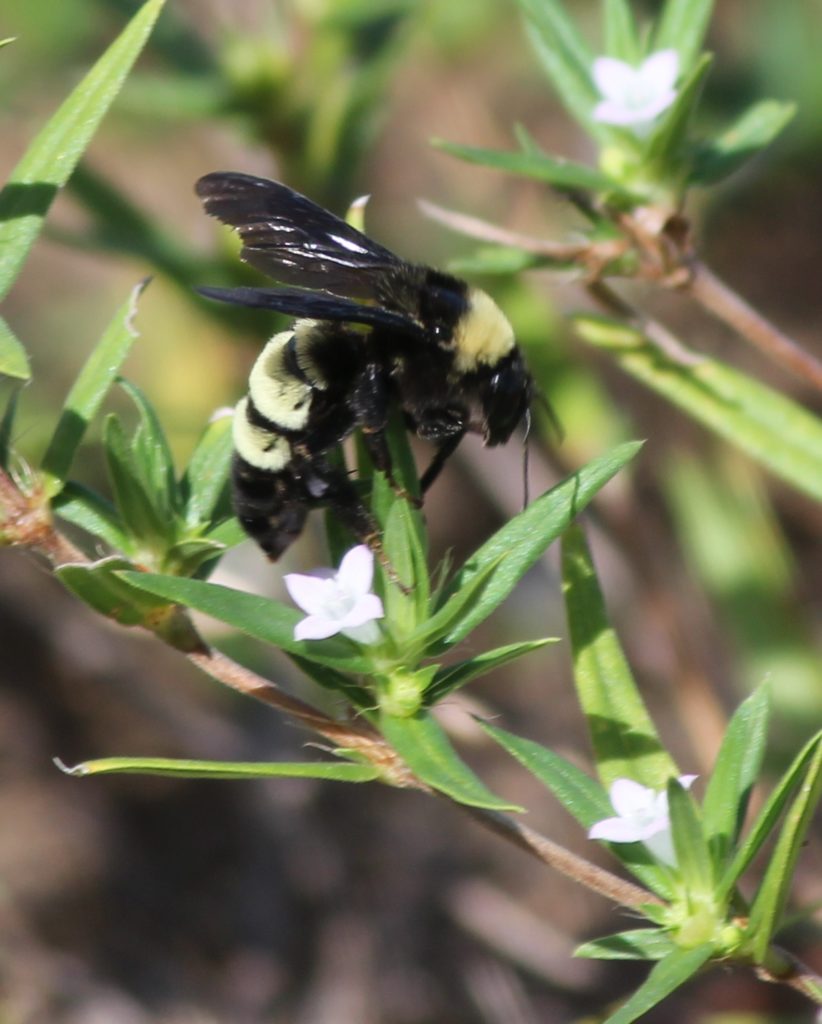
The queens will begin work on a new nest site and lay some eggs. Those eggs will develop into the first generation of female workers for the year, and those workers, who are smaller than the huge queen, will help her forage for a while, and tend the new bee larvae while the queen stays underground more and more. Soon, the queens won’t be out, but the number of Bumblebees flying will increase as the workers enter the scene.
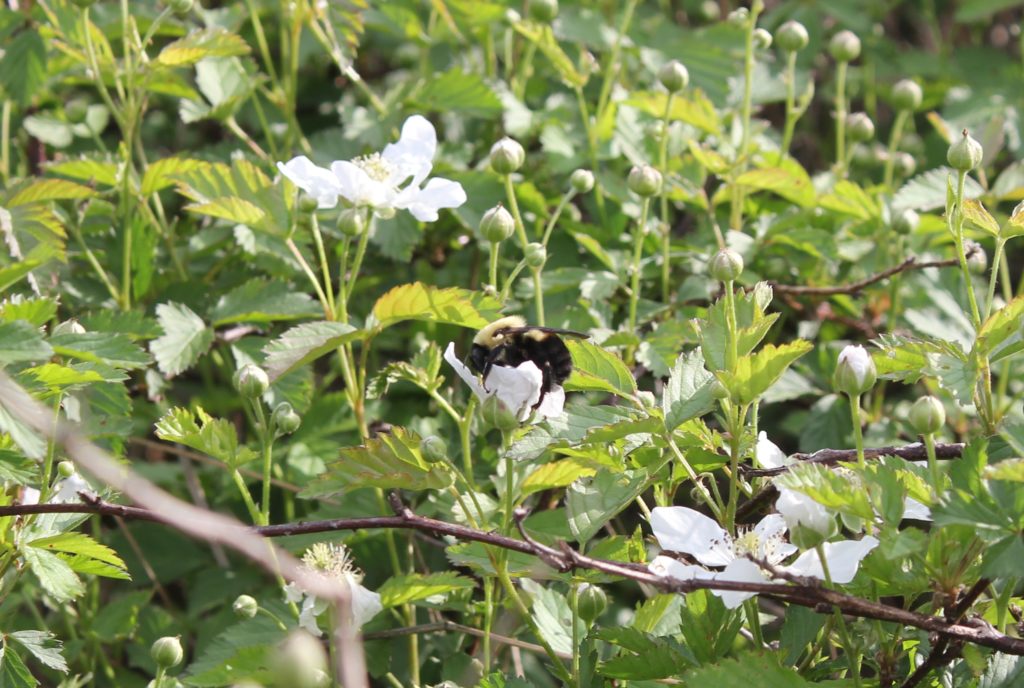
This time of year Rubus species get their attention in a big way. So many flowers in such a small space in a Blackberry patch! Queens fly ponderously from one blossom to another, always wary as they forage. Get too close, and they’re off to resume foraging at a safe distance. They are much harder to sneak up on than the workers that will make their appearance soon.

At the refuge we have American Bumblebees (Bombus pensylvanicus), Brown-belted Bumblebees (Bombus griseocollis), and Southern Plains Bumblebees (Bombus fraternus). Texas has fewer than a dozen species you are likely to find, so learning to identify the Texas species is relatively simple.
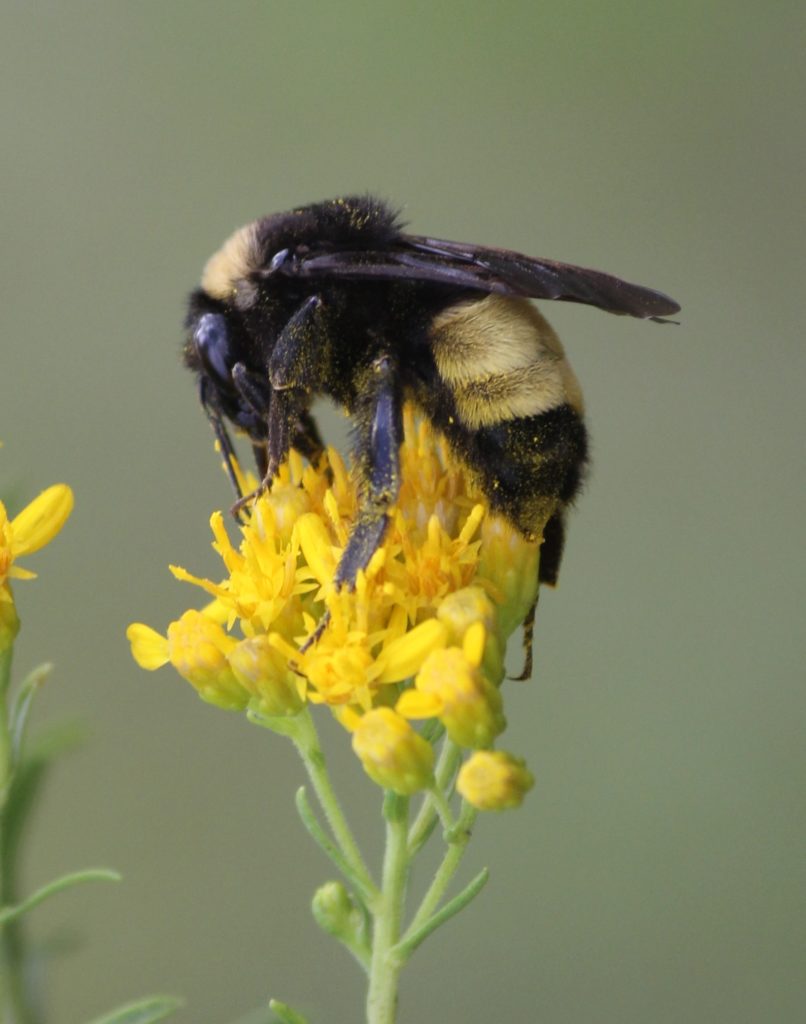
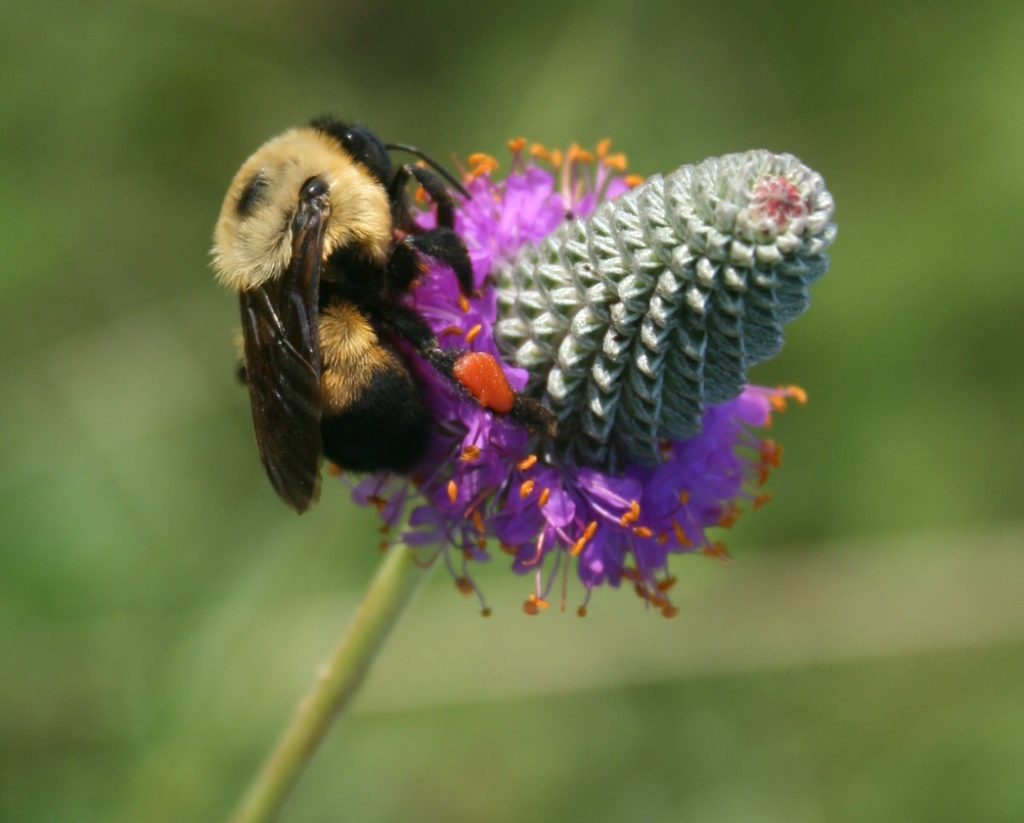
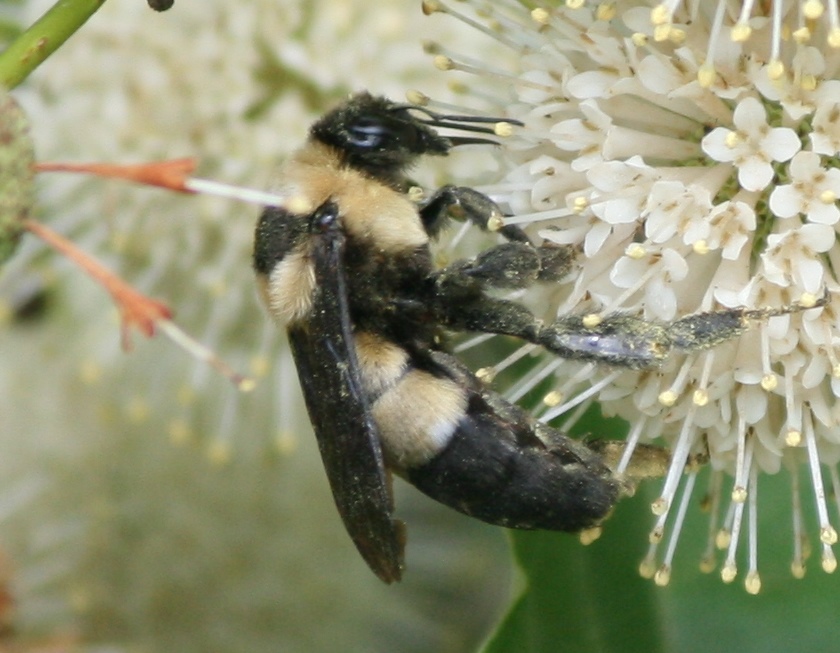
I’m pretty sure I won’t be able to resist posting more about Bumblebees another time. For now, find yourself a Blackberry patch or visit a patch of Paintbrush and go see the queens. I guarantee that their sheer size is impressive.
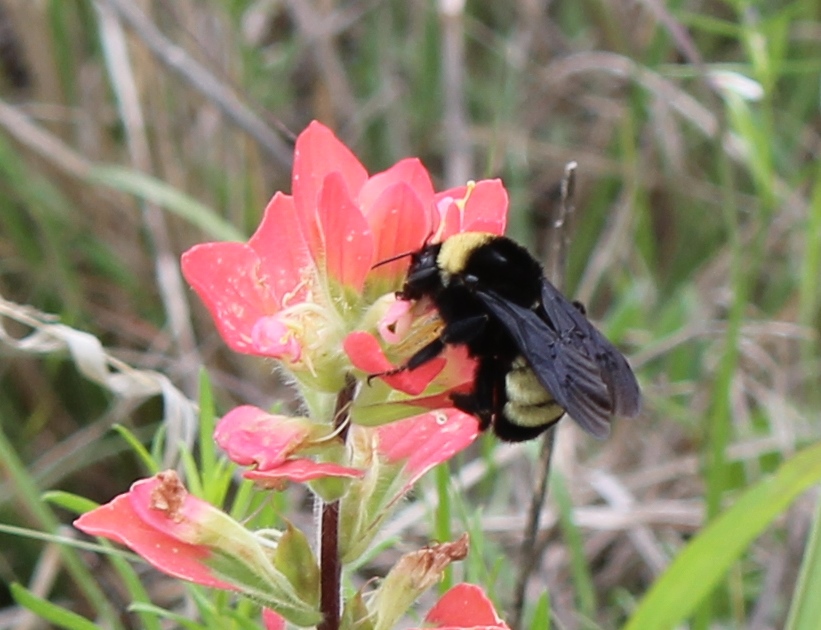

If you do see some Bumblebees, snap a photo and post it to Bumblebeewatch.org. It’s fast and easy, and you’ll be able to keep track of all the Bumblebees you’ve seen while someone else IDs them for you.
You can find out more at the Texas Bumblebees Facebook page, or at the Texas Native Bee Co-op Facebook page (disclaimer: I am a co-admin at Texas Native Bee Co-op)